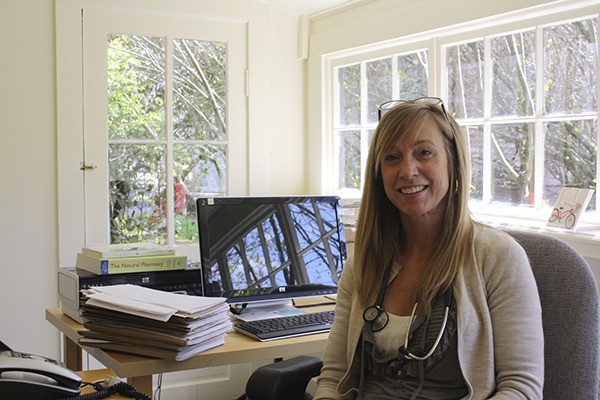At a time when the island is facing challenges regarding health care, the Vashon Women’s Health Center is undergoing a large change and becoming a cash-only practice.
As of Feb. 1, the clinic, which provides care to about 1,300 women and teens, will stop taking insurance and instead provide care on a fee-for-service basis. Owner Kimberly Valencia (formerly Scheer) said it is a decision she has thought about carefully and one she hopes will make her struggling business sustainable and enable her to continue practicing on the island.
“I’ve known something needed to happen for six months or more,” she said recently. “I’ve been pretty much volunteering my time for the past five and a half years.”
Come next month, patients will pay for services out of pocket and then submit claims to their insurance company to be reimbursed. Clinic staff are encouraging patients to check with their insurance providers now to find out if they will provide reimbursement for providers who are not in their network.
In return, Valencia said, she and her staff, which includes registered nurse Kimberly Benner and office manager Kathy Zbryk, will try to make the reimbursement process as easy as possible for patients by providing them with the necessary claim forms. She will also drop her office visit fees by 20 percent and will add e-visits — low-cost visits done electronically for minor ailments — and eventually home visits. Insurance coverage for lab work, special tests, such as CT scans and MRIs, and prescription coverage will not be affected. The change applies only to Valencia and fellow nurse practitioner Katie Konrad, who joined the practice part-time in November. Physical therapist Andra DeVoght and massage therapist Caroline Sias, who also practice out of the clinic, will continue their current insurance billing practices.
Not long ago, Valencia said she was prepared to close her practice and had a job interview lined up, but then changed her mind, determined to come up with an alternative.
This plan is that alternative, and while she said other nurse practitioners have done it successfully, she is clear there will be challenges.
“We will lose patients,” she said. “The success of this model depends on the number of people we’re able to maintain.”
Valencia opened her practice in 2009, expecting to lose money initially. In recent years, her patient load has grown considerably, she said, with many new patients coming to her when changes took place at other island clinics, and health care reform brought her “an onslaught” of new patients. But, Valencia said, while clinic income covers the cost of running the business, she has not been able to draw a salary since she first opened the doors — and that cannot continue.
Indeed, it is increasingly rare for health care professionals to practice outside of a larger system, and Valencia explained some of the challenges her clinic faces.
Because she and Konrad are nurse practitioners, insurance reimburses them at about 80 percent of what it pays physicians, she said. Another 9 percent of charges goes to pay the person who does the billing for the practice. Medicaid, or insurance plans such as Apple Health for people with low incomes, pays at an extremely low rate and provides only one-third of the amount billed.
“It does not come close to covering our costs,” she said, estimating that about 25 percent of her patients are covered by such a plan.
Medicare also has a low reimbursement rate, she added, and until recently she did not turn away any patients because of financial hardship.
Finally, as a small clinic, her buying power is much less than a large system. For example, she said that her office fits many intrauterine devices and must pay $700 to $900 for each one, a price that she said she believes is hundreds of dollars more than the amount large health systems pay. The same concept holds true for vaccines, with major purchases tying up cash and reimbursements falling short.
“It’s incredibly sad it has to be this way,” she said. “Small clinics are taking the brunt of insurance companies not paying.”
To be successful with the current insurance billing program, Valencia said they would have to double their patient load, which would mean seeing patients in 10- or 15-minute visits, as is standard practice at many clinics, but not there.
“We do 20- to 30-minute appointments,” Valencia said. “We have time to listen intensely and address (patients’) questions.”
Some patients may benefit financially from this new model, she added, particularly those who have high- deductible plans. For low income patients, the clinic will offer a day of preventative care every few months at little or no cost for those who qualify. Additionally, she said, Vashon Youth & Family Services will continue to provide some assistance for people who wish to be seen at the clinic.
Valencia will give this new plan six months and then make further adjustments if needed, but she and her staff say they hope attrition will be low and they can continue serving the island.
“If we can keep close to what we are doing now, it should work,” she said.



